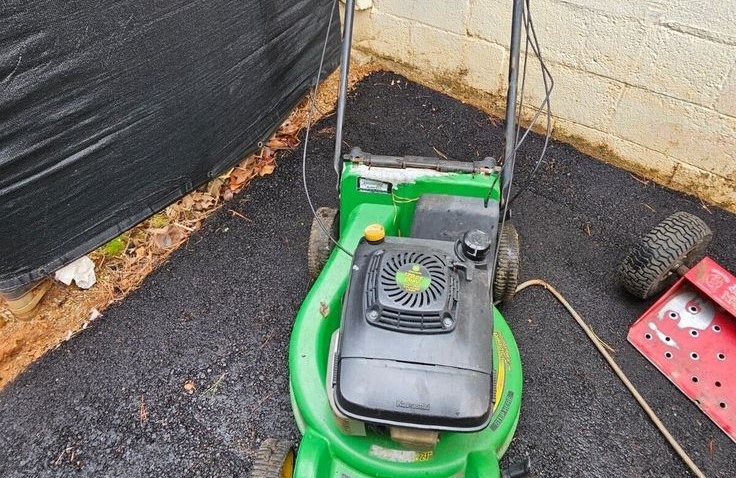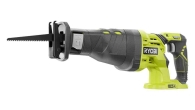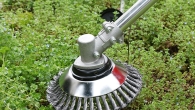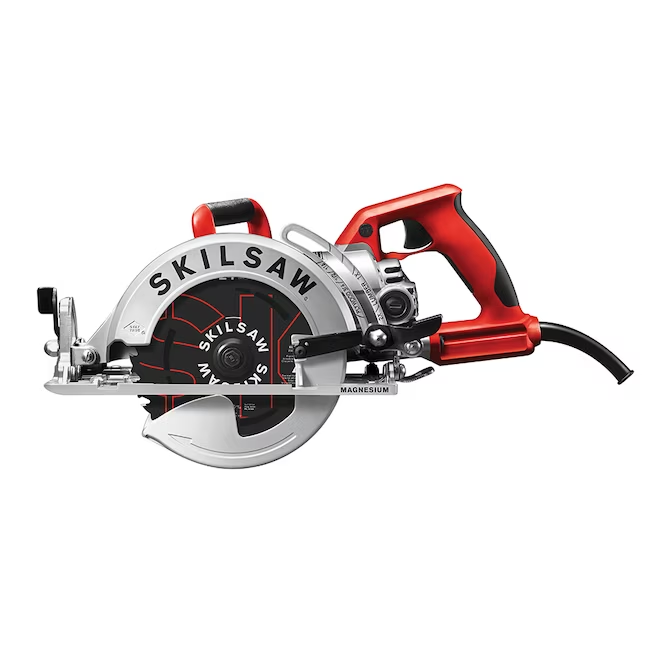
How to Test Lawnmower Coil: Diagnosing Ignition Issues
Introduction to Lawnmower Coils
A lawnmower coil, also known as an ignition coil, is crucial for starting your lawnmower’s engine. It transforms the battery’s low voltage to the thousands of volts needed to create an electric spark in the spark plugs. This spark ignites the fuel in the engine, allowing it to run.
When this coil works correctly, your lawnmower fires up with ease. However, a faulty coil can lead to starting issues or inconsistent engine performance. Knowing how to test lawnmower coil functionality is a valuable skill. It helps detect problems early and prevents extensive damage to your mower’s engine.
Testing the lawnmower coil is straightforward with the right tools and some basic understanding. As you learn about the role of the coil, it’s just as important to recognize the signs of malfunction. A defective coil often showcases specific symptoms which we will address in the following sections.
So, whether you’re a seasoned gardener or a newbie DIY’er, this guide will help you understand, diagnose, and maintain your lawnmower’s ignition system. Equip yourself with this knowledge to ensure your mower is always ready for the task at hand.
 Signs of a Faulty Lawnmower Coil
Signs of a Faulty Lawnmower Coil
When your lawnmower struggles to start, it might point to a coil issue. There are several telltale signs that your lawnmower coil may be faulty. Look out for the following symptoms:
- Failure to Start: The most obvious sign is when your lawnmower fails to start at all. This could mean the coil can’t produce the necessary spark.
- Unstable running: If the mower starts but stops unexpectedly or runs erratically, the coil may be inconsistent.
- Poor acceleration: When your lawnmower doesn’t pick up speed as it should, a weak spark from a defective coil could be to blame.
- Backfiring: A backfiring lawnmower is often a symptom of a misfire in the engine, which can be caused by a faulty coil.
- Reduced power: If your mower seems to lack the power it once had, this could signal an issue with delivering adequate voltage to the spark plug.
Recognizing these issues is the first step in learning how to test lawnmower coil function. If you notice any of these problems, prepare to test your coil to confirm your suspicions. In the next sections, we’ll cover the tools you need and the steps to take to perform this essential maintenance check.
Tools Needed for Testing the Coil
To accurately determine the condition of your lawnmower coil, you will need specific tools. Here’s a list of what you should gather before beginning the test:
- Multimeter: This is the key instrument for testing the coil’s resistance levels. Ensure it’s set to the ohms measurement setting.
- Spark plug wrench: Use this tool to remove the spark plug from the engine.
- Insulation pliers: These are useful for removing the coil wire without causing damage.
- Screwdriver set: A variety of screwdrivers may be required to access the ignition coil.
- Clean cloth: To clean the coil and connections before testing.
- Work gloves: Safety is paramount, so wear gloves to protect your hands.
- Safety goggles: Protect your eyes from any debris during the process.
Having these tools at hand will facilitate a smooth testing process of your lawnmower coil. Each tool plays a role in ensuring you can perform the test effectively and safely. Make sure they are all in working order before starting the procedure outlined in the subsequent sections.
Safety Precautions Before Testing
Before you begin to test your lawnmower coil, safety should be your top priority. Implement the following safety measures to prevent injuries and protect your equipment:
- Turn off the Mower: Ensure the lawnmower engine is off and cooled down. Disconnect the spark plug wire to prevent accidental starts.
- Wear Protective Gear: Always wear work gloves and safety goggles. These will protect your hands and eyes from sparks or debris.
- Work in a Ventilated Area: Perform the test in an open or well-ventilated space. This minimizes the inhalation of any fumes or engine gases.
- Remove Jewelry and Loose Clothing: Keep away any item that might catch on engine parts or tools. This includes watches, bracelets, and loose sleeves.
- Prepare the Area: Clear the workspace of any flammable materials. Gasoline or oil containers should be at a safe distance.
- Check Your Tools: Before testing the coil, inspect all tools for damage. Faulty equipment could cause accidents or incorrect test results.
By following these precautions, you ensure a risk-free environment for testing the lawnmower coil. Additionally, these steps help how to test the lawnmower coil process go smoothly. Up next, we will walk through the steps to effectively test the coil for any signs of malfunction.
 Step-by-Step Guide to Testing the Coil
Step-by-Step Guide to Testing the Coil
Now that you’re ready with your tools and safety measures in place, let’s go through the steps on how to test lawnmower coil. This guide will provide you with a simple, methodical approach to diagnosing your lawnmower coil issues.
- Access the Ignition Coil: First, locate the ignition coil on your lawnmower. You might need to remove the mower’s cover or housing. Use the screwdriver set to do this.
- Disconnect the Coil: Carefully disconnect the wire that leads to the spark plug. Use insulation pliers to avoid damage. Then, remove any other connections to the coil.
- Inspect the Coil Visually: Check the coil for any visible signs of wear or damage—such as burnt areas or cracks. A damaged coil often needs replacing.
- Set up the Multimeter: Turn your multimeter to the ohms setting to measure resistance. Check the multimeter manual for specific settings if needed.
- Test Primary Coil Resistance: Locate the primary coil connections. These are usually smaller terminals. Place the multimeter leads on them to read the resistance. Note the value.
- Test Secondary Coil Resistance: Now find the secondary coil connections, typically where the spark plug wire connects. Again, place the multimeter leads here and note the resistance value.
- Compare to Specifications: Look up the proper resistance values for your lawnmower model. Compare your readings to these specs to determine if the coil falls within the acceptable range.
- Reassemble if Necessary: If the coil passes the resistance tests, reconnect everything. Make sure all connections are secure. If the coil failed, it’s time for a replacement.
Keep your lawn mower’s manual handy to check specifications for resistance levels. Manuals often have a troubleshooting section that can guide you through this process. By following these steps carefully, you can effectively gauge the health of your lawnmower coil and take the necessary actions for repair or replacement.
Analyzing Test Results
Once you have completed the steps on how to test lawnmower coil, it’s time to analyze the results. Proper interpretation of the multimeter readings is crucial for diagnosing coil health. Here’s how to analyze your test results:
- Compare Readings to Specifications: Match your multimeter readings against the manufacturer’s specifications. Your lawnmower’s manual is the best source for these figures.
- Assess Primary Coil Readings: A primary coil typically has low resistance. If the reading is too high or infinitely open, there’s likely a break in the coil.
- Evaluate Secondary Coil Readings: Secondary coil resistance should be higher than the primary. Excessively high or low readings suggest a malfunction.
- Look for Consistency: Your readings should be stable. Fluctuating resistance indicates an unreliable coil.
If your readings are outside the normal range, this means your coil may be defective. In such cases, you might consider a replacement. Remember to double-check your connections and test again to confirm the results before deciding on the next steps.
Solutions for a Defective Coil
After learning how to test lawnmower coil and analyzing the results, you might find the coil to be defective. If your coil is not functioning as it should, here are the solutions to consider:
- Replace the Coil: If testing confirms the coil is faulty, the best option is to replace it. Ensure you get the right model for your lawnmower.
- Check Connections: Sometimes issues occur due to loose or corroded connections. Inspect and clean all contacts and reconnect them securely.
- Consult a Professional: If you’re unsure about the issue or how to fix it, seek help from a professional. They can offer an expert diagnosis and solution.
- Refer to the Manual: Your lawnmower’s manual may provide specific instructions for repairing or replacing a coil. Use this as a guide.
- Avoid DIY Fixes: While some may suggest makeshift repairs, these are often temporary and can cause further harm. Stick to recommended solutions.
- Use Warranty: Check if your lawnmower is still under warranty. The manufacturer might cover the repair or offer a replacement coil.
Addressing a defective coil promptly will not only save you time but also ensure your lawnmower performs at its best. Taking the right steps to correct the issue will prolong the life of your mower and maintain the health of your lawn.
Maintenance Tips to Prevent Coil Issues
To keep your lawnmower coil in top condition, follow these maintenance tips:
- Regular inspections: Check your coil for signs of wear or damage often.
- Clean connections: Dust and debris can affect connections. Clean them during routine maintenance.
- Follow manufacturer’s guidance: Stick to the care instructions in your lawnmower manual.
- Use fresh fuel: Old or contaminated fuel can cause engine issues that strain the coil.
- Store properly: Keep your lawnmower in a dry area to prevent rust and corrosion.
- Avoid moisture: Dry off your lawnmower after use, especially around the ignition system.
- Handle with care: Rough handling can damage the coil and other engine parts.
By taking these actions, you can reduce the likelihood of coil problems. Regular maintenance helps you catch issues early. This way, you can fix them before they lead to larger, more costly repairs. Following these tips will help ensure your lawnmower starts smoothly and runs effectively, saving you time and hassle in the long run.












Leave a Reply